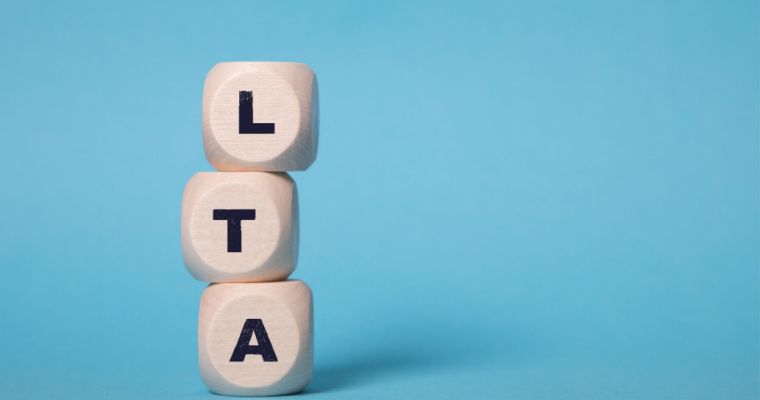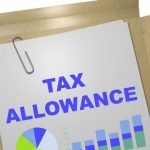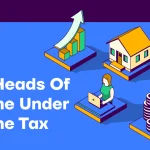How to Claim Leave Travel Allowance? – Benefits, Documents Required and Exemptions

What is Leave Travel Allowance?
Leave Travel Allowance or LTA, also known as Leave Travel Concession, is a salary benefit that employers offer to employees covering their travelling expenses (up to a limit) when they are on leave from work. The Income Tax Act, 1961 provides a deduction against the LTA received and claimed by the employee under the old tax regime.
Key Conditions to Avail of LTA Tax Exemption
The following conditions must be met to receive a leave travel allowance and get tax exemption for it:
- You must travel to a destination within India. No allowance is given for international travel
- You can only claim your LTA for an actual journey. Make sure you keep proof of the journey, such as train tickets, boarding passes, or any other booking documents that can verify your journey.
- LTA exemption is only available for travel costs. Expenses incurred on lodging, food, etc., do not come under its purview.
- You can claim LTA while travelling alone or with your family members. In this context, ‘family’ includes your spouse, siblings, dependent parents, and children.
- Only two children who were born after 1st October 1998 are covered under LTA. However, children born before the said date do not come under this restriction of ‘only two children’.
- You can only claim an LTA tax exemption twice in a block of 4 years. Block years are set by the Government. The current block year is 2022-2025.
- The new tax regime does not include LTA exemption. LTA can be claimed for tax deduction only under the old tax regime.
LTA Example
Let us say that your employer offers ₹40,000 as LTA, which is a part of your CTC. You go on a domestic vacation with your family. Let us assume your flight tickets cost you ₹30,000 and other expenses amounted to ₹5,000. While claiming your LTA, you are only eligible to get an allowance of ₹30,000 (spent on travelling via flight). The ₹5,000 spent on accommodation, food, and other items is not included in LTA.
Deducting your LTA claim from your LTA eligibility of ₹40,000, the remaining ₹10,000 will be taxable as your earned income, as per the income tax slab applicable to you. Of course, this is under the old tax regime. Should you choose the new tax regime when filing your income tax, there is no provision for LTA exemptions at all.
How to Claim LTA Exemption?
Each employer may have a different procedure that their employees need to follow to claim an LTA tax exemption. Typically, the employer announces a due date and a specified time period during which you can fill out the necessary forms and attach your travel proofs.
While not all employers may ask for proof when claiming, it may be the best practice to save the tickets for future verification.
Expenses Exempt Under LTA
1. Travel by Air
The amount of exemption is limited to the economy fare of the national carrier (Air India) for the shortest route between the two places. If the actual amount spent on travel is lower, then that will be considered.
2. Travel by Train
Fare of the first class AC ticket for the shortest route to the destination, or the actual amount spent, whichever is less will be considered while calculating the exemption amount.
3. Travel by Other Modes
| Situation | Amount of exemption |
| Place of origin of the journey and the destination are not connected by any recognised public transport. | It will be assumed that the journey has been made via rail. The first class (air conditioned) fare of the shortest route between the two places will be exempt. |
| Place of origin of the journey and the destination are not connected by railway but are connected via other recognised public transport. | The deluxe or first class fare applicable to the shortest route of the available recognised transportation system, or the actual expenses, whichever is less. |
Also Read
Documents Required to Claim LTA
To claim LTA, all you need to do is fill out the LTA form furnished by your employer and attach the proof of travel along with it. There are no specific documents that are mandatorily required to claim LTA exemption. However, it is best if you keep proof of your travel in case the tax authorities demand them in the future. Proof of travel includes your travel tickets, be it flight booking receipts, train tickets, bus tickets, or a receipt received while booking your travel using any other mode.
Benefits of LTA
Leave travel concession comes with the following benefits:
1. LTA is Part of Your Overall Compensation
LTA is a component of the salary structure and is a benefit offered by your employer as a part of your CTC.
2. LTA Helps You Cover the Costs of Travel
You can claim your actual cost of travel and save on your expenses on a trip.
3. LTA Allows You to Mitigate Your Tax Liability
Since LTA forms a part of your CTC, it comes under the salaries head while calculating your income tax liability. A deduction is available for LTA under section 10(5) of the Income Tax Act under the old tax regime.
4. You Can Make an LTA Claim Whether You Travelled Alone or with Family
Even though the benefit is offered by your employer, it extends to your family as well. It is applicable whether you travelled alone or with them.
LTA Restrictions
Below is a list of restrictions that must be kept in mind while claiming a leave travel allowance exemption:
- Only the costs of domestic travel are included under the LTA exemption. International travel is not considered.
- You cannot make a claim for the costs associated with lodging, food, shopping, or any other cost other than the amount spent on the actual commute.
- You can only make a claim two times during the four-year block period.
- Even if you have claimed neither of the two eligible LTA exemptions, you can carry over only one to the next block year.
Block Year
A block year is a set of 4 years. This was decided by the government to allow for flexibility in travel and extend tax benefit to the employee when calculating leave travel allowance exemption. The block year system was established in 1986, when the first block year was announced as 1986-1989.
The current block year is 2022-2025. Interesting fact: the previous block year was supposed to have been 2018-2021. However, due to suspension of travel during the pandemic, this block year was extended and made applicable till 31st December 2022, by virtue of rule 10 of the CCS(LTC) Rules.
Carryover of Unclaimed LTA
If you have not claimed any LTA or have claimed it just once in the last running block period, you can claim an additional LTA exemption during the current block year. This implies that in the current year, you can avail this allowance thrice. However, the first of the three claims must be made within the first year of the block year. For instance, if the block year is 2022-2025 during which you wish to claim 3 LTA exemptions, the first claim must be made in 2022.
Final Word
Leave Travel Allowance is a benefit offered by employers to compensate for travel of the employee and close family when on leave. You can claim an LTA exemption, offered under section 10(3) of the Income Tax Act, while filing your tax return using the old tax regime. The new tax regime, however, does not have a provision for LTA.
That said, if you want to maximise tax savings while investing in India’s top 50 companies, you may consider Navi ELSS Tax Saver Nifty 50 Index Fund.
Disclaimer: Mutual fund investments are subject to market risks, read all offer documents carefully
Read More on Income Tax Act
FAQs
No, you can not claim LTA if you have not travelled. LTA forms a part of your salary. If not claimed, the entire amount is taxable as per your income tax slab. You may need to attach proof of travel to claim the LTA exemption.
You can claim an LTA exemption twice in a block year. A block year comprises of 4 years.
The current block year is from 2022-2025. The previous block year was from 2018-2021. However, this was extended till 31st December 2022 in view of the travel restrictions during the coronavirus pandemic.
Proof of travel for claiming LTA can be your air tickets, boarding pass, booking proof sent by a travel agent, etc. Anything that shows your travel bookings can be submitted.
No. Hotel stay is not included under LTA. Only your commuting expenses are counted. No other expenses, including those on food, shopping, etc. come under leave travel allowance.
No. The government has excluded leave travel allowance under the new tax regime announced in Budget 2020. It is currently optional to choose this regime. LTA exemption continues to be available under the old tax regime.

Customer’s Feedback
No comments found.What is Form 26QB for TDS? How to Download and Submit it?
While purchasing a property, buyers are liable to pay various taxes. The Finance Act, 2013 made TDS... Read More »PF Withdrawal Rules 2023 – Rules, Documents Required and Types
EPF/PF Withdrawal Employees’ Provident Fund (abbreviated as EPF) is a popular retirement sav... Read More »Stamp Duty and Property Registration Charges in Delhi 2023
It is compulsory for property buyers in the Capital to pay stamp duty in Delhi during property regi... Read More »Income Tax Return – Documents, Forms and How to File ITR Online AY 2023-24
In India, it is mandatory for all taxpayers who earn more than the basic tax exemption limit to fil... Read More »What is Section 80CCD – Deductions for National Pension Scheme and Atal Pension Yojana
The Income Tax Act provides a number of deductions and tax benefits to taxpayers, so they can strat... Read More »Tax on Dividend Income: Sources, Tax Rate and TDS on dividend income
What are Dividends? Companies may raise funds for running their operations by selling equity. Th... Read More »Section 112A of Income Tax Act: Taxation on Long-Term Capital Gains
What is Section 112A? Section 112A of the Income Tax Act was announced in Budget 2018 to replace... Read More »Section 206AB of Income Tax Act: Eligibility And TDS Rate
Section 206AB was introduced in the Finance Bill 2021 as a new provision pertaining to higher deduc... Read More »What is a Credit Note in GST – Example, Format and Steps
A GST Credit Note is mandatory for any GST-registered supplier of goods or services. As a supplier,... Read More »Exemptions and Deductions Under Section 10 of Income Tax Act
What Is Section 10 of the Income Tax Act? Section 10 of the Income Tax Act, 1961 provides tax-sa... Read More »Section 57 of the Income-tax Act – Income from Other Sources
It is quite likely that many entities - individuals as well as businesses - have multiple sources o... Read More »What is Dearness Allowance? – Types, Calculation, and Current Rate
What is Dearness Allowance? Dearness Allowance Meaning - Dearness Allowance (DA) is an allowance... Read More »Top 10 Chit Fund Schemes in India in 2023
Chit funds are one of the most popular return-generating saving schemes in India. It is a financial... Read More »10 Best Gold ETFs in India to Invest in April 2023
Gold ETFs or Gold Exchange Traded Funds are passively managed funds that track the price of physica... Read More »10 Best Demat Accounts in India for Beginners in 2023
Creation of Demat accounts revolutionised the way trades were conducted at the stock exchanges. It... Read More »20 Best Index Funds to Invest in India in April 2023
What is an Index Fund? An index fund is a type of mutual fund or exchange-traded fund (ETF) that... Read More »Best Arbitrage Mutual Funds to Invest in India in April 2023
Arbitrage funds are hybrid mutual fund schemes that aim to make low-risk profits by buying and sell... Read More »10 Best SIP Plans in India to Invest in April 2023
What is SIP? SIP or Systematic Investment Plan is a method of investing a fixed amount in ... Read More »10 Best Corporate Bond Funds in India to Invest in April 2023
Corporate bond funds are debt funds that invest at least 80% of the investment corpus in companies ... Read More »10 Best Bank for Savings Account in India [Highest Interest Rate 2023]
Savings account is a type of financial instrument offered by several banks. It lets you safely depo... Read More »






















